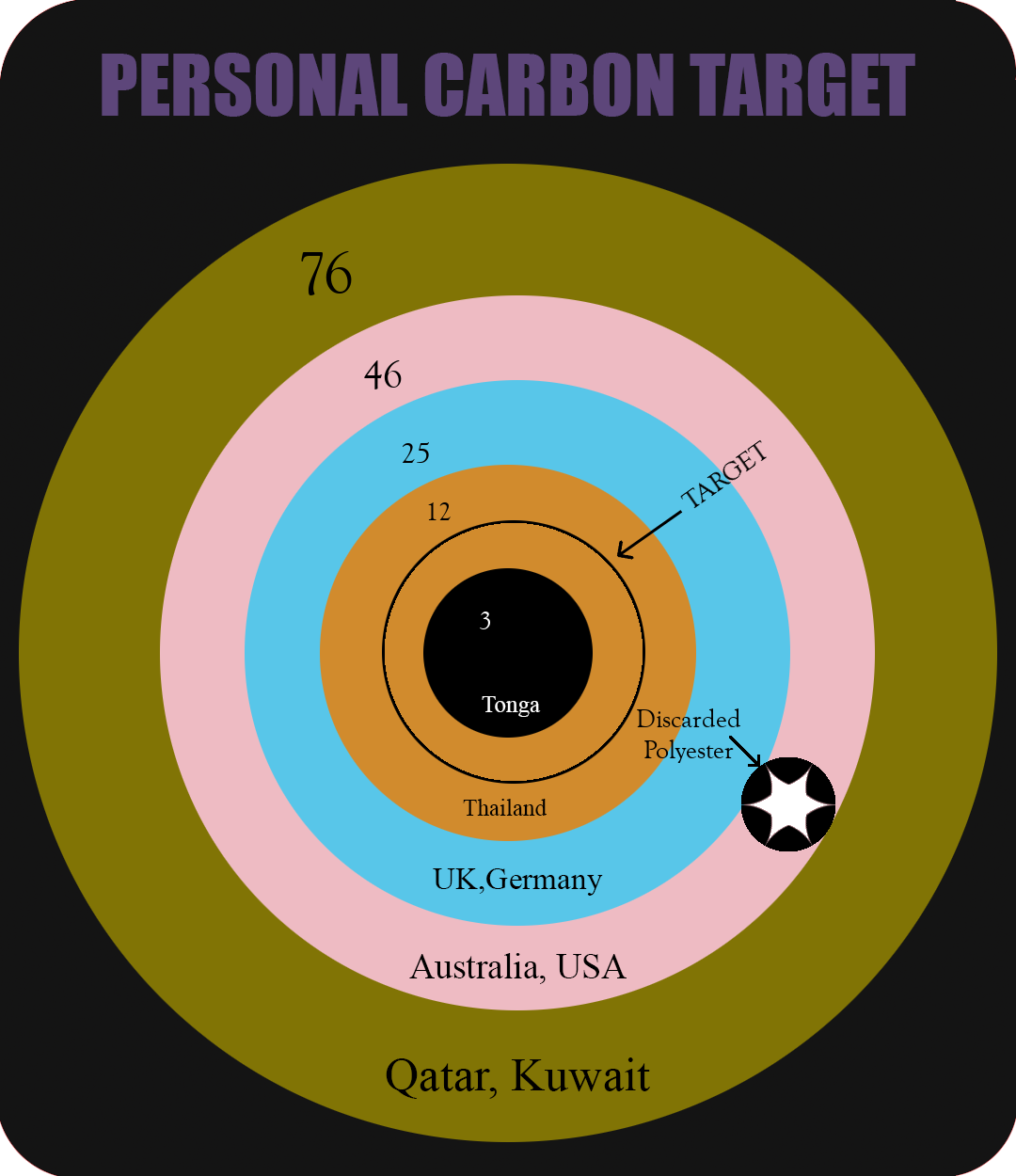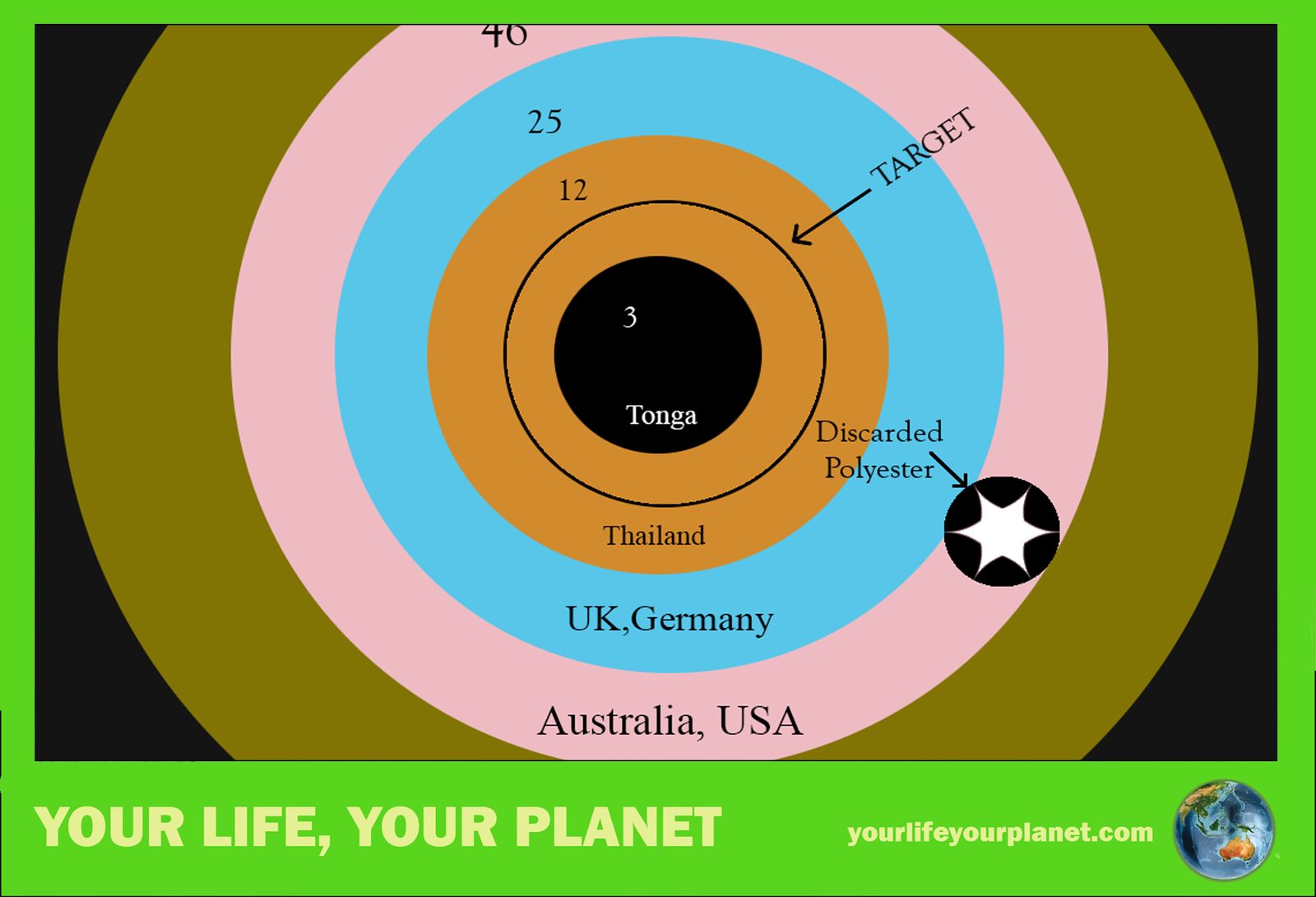Your Life Your Planet uses your personal carbon target and other infographics to help you get a handle on the actions you can take that make a real difference to your planet.
I trawled through the thousands of books, television shows and podcasts about living sustainably, saving the climate and making a difference and they contradicted each other and, sometimes, themself.
If you go online, the government sites contradict each other, and the international information provided by the Australian government. The IPCC says that the average Australian emits greenhouse gas equivalent to 16 tonnes of carbon dioxide every year, the Australian government says it is 32 and they will reduce it to 16. Some people say hot water is the largest contributor to household emissions, others blame eating meat.
Your Life Your Planet is based on factual data that is simple to understand and clearly represented. After months of doodling, I came up with The Personal Carbon Target, the Personal Water Target and the Work Environment Life balance.
Here’s the way I introduce the Peronal Carbon Target in the book.
Introducing your Personal Carbon Target
It’s one thing to have a bunch of bright ideas, the real challenge is putting them into practice. That’s why we measure the tips against infographics such as your Personal carbon target. (Words in bold are defined and discussed in the Glossary.)

The body of the target represents the carbon footprint of individual humans in different countries. The numbers given are in kilograms per day for particular countries. A tonne of carbon dioxide a year is 2.7kg/day. ‘makes sense to me. 2.7 x 365 = 1,000
The average Australian, for example, emits 46 kilograms of CO2 per day, about the same as someone in the USA, nearly four times as much as the average Thai, and 15 times as much as the average Tongan.
Let that sink in for just a moment.
Your personal target is the area in the line just outside Tonga. That is 5.5 kilograms of CO2 or its equivalent (CO2e) every day. That is two tonnes per year — we are aiming for a two-tonne lifestyle. If we all reduced our emissions to one eighth of what they are now, we would be able to keep temperatures at around the present level, which is already pretty hot.
Now let that sink in.
Punch a hole in the personal carbon target
Where this gets really interesting is when we show the impact of a specific tip as a hole in the target. If you stopped throwing away clothes, for example, the polyester you take out of production would remove about 0.8 kilograms of CO2e each day, shown here as a star burst hole in Australia’s emissions.
There are two sobering facts made obvious when you see that hole in this diagram.
1. We need to make a lot of these holes to get our emissions down to an appropriate level. About 50 equivalent actions, in fact.
2. Just the polyester in the clothes thrown away by the average Australian pumps about as much carbon dioxide into the atmosphere as the average Kenyan or Nigerian does with all their activities.
Your shirts are more polluting than their entire life.
Now sit for a while and let that sink in.
Other infographics
Other infographics are introduced in the relevant chapters. The Personal water target makes its first appearance in Chapter 2, Bathroom, Toilet & Laundry, and the Work-environment-life balance (WELB) appears in Chapter 3, Bedroom.

Carbon Dioxide and its equivalent
Before you can really take the Personal Carbon Target to heart you need to understand greenhouse gas and the role of carbon dioxide. That, you might be thankful for, is the topic for another day. Just remember, Carbon dioxide is about breathing and burning, methane is about animal digestion. Bacteria are animals too.
Making an impact
The impact of each tip is represented as a hole, shot in the Personal carbon target.
The size of the hole represents the saving made if the average Australian in the ‘typical’ Australian household as defined in the ready reckoner, were to follow the advice of the tip.

Replacing all your electricity consumption with power generated by solar photovoltaic cells installed on your roof, for example, would create a hole almost one sixth the size of the target. It eliminates nearly all the emissions from electricity use, which is over half of the emissions generated in the home, but that is only one third of the total household footprint. The panels, invertor and battery also add slightly to the footprint of the things you buy
Some ‘holes’ will overlap. If I buy some rooftop solar and one energy-efficient electric heater at the same time, I will reduce my carbon footprint more than if I only did one tip, but not as much as I would think if I added together the maximum savings available from each tip. The ‘holes’ in the target overlap because some of the electricity savings from the heater involve renewable energy and some do not.
The big picture
Most of the book is about what you can do in the household. But the last section focuses on the big picture. It is not about tips, it is about facts and figures. What it concentrates on is the discrepancies between all the published figures. Again, you might be thankful, that is a story for another day.
